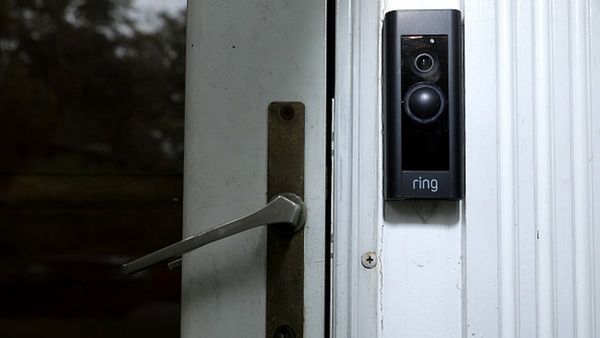
Are you ready for a rare eclipse of the Sun? Visible as a “ring of fire” in parts of Canada, as a rare crescent-shaped “sunrise solar eclipse” in the northeast U.S. and as a partial solar eclipse across much of the rest of the northern hemisphere, here’s everything you need to know about Thursday, June 10, 2021’s celestial event as a whopping 60 countries see a chunk taken out of the Sun:
How to stream the solar eclipse
If you want to watch the eclipse online there are numerous livestreams planned. Here are four hand-picked broadcasts from around the world that come recommended (or you can trawl this list of 11 places to live stream the eclipse on YouTube and Facebook):
1. timeanddate.com (global)
2. Virtual Telescope Project (global)
3. Royal Observatory (London, U.K.)
4. NASA Video (U.S)

How to safely watch the solar eclipse
Is the solar eclipse safe? Arm yourself with advice from a world-renowned expert on eclipse eye safety and seven ways to watch the solar eclipse safely and you’ll be fine. Solar eclipses can be dangerous and you do need to be very careful. Here’s what to remember:
- never look at the Sun without an ISO-compliant solar filter/solar eclipse glasses.
- never look at the Sun through an optical device of any kind even while wearing solar filters/solar eclipse glasses (they must always go in front of camera lenses, binoculars and telescopes).
How to photograph the solar eclipse with a smartphone, cameras and a telescope
It’s possible to take a photo of the solar eclipse using a phone or a “proper” camera. Here’s how to do it.
However, the safest and often the most unique souvenir photos are of people watching the eclipse through eclipse glasses, and of “crescent Suns” filtered through a kitchen colander on to the ground or on to a wall.

Where and when to see the ‘sunrise solar eclipse’ from the U.S.
In the U.S. a partial solar eclipse will be visible in parts of the southeast, northeast, midwest, and in northern Alaska. Those on the east coast in general—from South Carolina heading north, and heading northwest to North Dakota—will all see a partially eclipsed Sun at sunrise on Thursday, June 10, 2021.
Here’s exactly when to look at the “sunrise solar eclipse” from everywhere in the U.S. along the path. You’ll need to get a clear view of the horizon during sunrise in order to see the eclipse—such as a beach or a high building—and hope for clear skies.
Where and when to see ‘solar horns’ from the U.S.
The New York/New Jersey area in particular is about to get its weirdest sunrise for 63 year as strange “solar horns” appear on the horizon (clear skies allowing). Here’s how to see the solar horns, also known as “devils’ horns.”
Eclipse photo of the day? It could well be a two-horned sunrise over the Atlantic Ocean. Or framed with the Statue of Liberty.

Where and when to see the ‘ring of fire’ solar eclipse from Canada
Though most of the world will experience this as a partial solar eclipse, it’s actually a specific kind for some—an annular (ring-shaped) solar eclipse that will be visible from Canada, Greenland and over the North Pole to Siberia in eastern Russia.
“Annular eclipses don’t always get the same kind of attention as total solar eclipses,” said Dr. Jackie Faherty, Senior Scientist and Senior Education Manager jointly in the Department of Astrophysics and the Department of Education at the American Museum of Natural History. “The “ring of fire” is not going over highly populated places, but a swathe of Greenland, the North Pole and Siberia, areas where you don't have a ton of people.”

Where and when to see the partial solar eclipse from the U.K., Europe and Central Asia
Europe’s first solar eclipse since 2015 will see some of the Sun hidden by the Moon. Northwest Europe gets the most eclipse, so the best places to be will be the north of the U.K and in northern Scandinavia.
Here’s when to see the eclipse from the U.K and 29 European cities on Thursday morning and early afternoon.
In Reykjavík, Iceland, 60% of the Sun will be hidden. In the U.K. it’s between 20-39%. There will also be small partial solar eclipse in northwestern China and Mongolia.
What time is the solar eclipse?
For a expanded schedule specific for your location and timezone, visit TimeAndDate.com and enter your exact location.
Here’s the celestial schedule in Universal Time:
- Partial solar eclipse begins: 08:12 UTC
- Annular eclipse begins: 09:49 UTC
- Maximum solar eclipse: 10:41 UTC
- Annular solar eclipse ends: 11:33 UTC
- Partial solar eclipse ends: 13:11 UTC
How to plan for the solar eclipse
Other great resources for planning include a a Google Map of the event and animations to get animations of exactly what to expect from any location in the U.S.

Is it safe to watch the ‘sunrise eclipse?’
“When the Sun is very close to the horizon it is safer to look at, which is why we can we watch sunrises and sunsets,” said Faherty. “You’re staring at it through a huge amount of atmosphere that removes a lot of the dangerous radiation, but you don't ever want to stare at the Sun for any length of time—it dangerous, so get some solar eclipse glasses.”
Maybe you have some solar eclipse glasses leftover from 2017’s “Great AmericanEclipse?” If not, Faherty also advises projecting the light from the Sun onto the ground. “A lot of people use a colander that use to strain your pasta to get a lot of little different onto the ground—an in each one you’ll see the eclipse happening.

What is an annular solar eclipse?
This annular solar eclipse will see a bright ring around the Moon for a maximum of 3 minutes 51 seconds as seen from Canada, Greenland and Russia. That’s because the Sun, Moon and Earth will align while the Moon is close to its apogee, the furthest it gets from Earth in its elliptical monthly orbit. The Moon will consequently be too small to cover all of the Sun.
However, for most people in the path it will be a partial solar eclipse.

Understanding annular solar eclipses
There are four incredible sights to see during this solar eclipse, but what you will see depends on where you are on the planet:
- A “ring of fire” annular solar eclipse (Canada, Greenland and Siberia)
- A “sunrise eclipse” (northeastern U.S. and central, eastern and maritime Canada)
- “Solar horns” at sunrise (New York and New Jersey)
- “First contact” when the Moon first takes a bite out of the Sun (Europe and Central Asia)
What will the solar eclipse look like?
“Here's the thing though about partial eclipses—it will look like the sun, but just a little dimmer,” said Faherty. “If you wear your eclipse viewing glasses and you look at the Sun, then you're going to look and it'll look like the Sun is rising with like the “Death Star” taking a bite out of it!”

Best places to watch the solar eclipse
Some think that despite talk about “sunrise eclipses” and “rings of fire” in North America, it’s Europe that has the best view. “The best moment is that first moment when you catch the Moon start to cross the Sun,” said Faherty. “It’s a reminder that we predicted this to the second!”
You can even do a countdown to yourself and then watch the eclipse start. “It’s a moment to reflect on how phenomenal are our advancements in understanding the Universe,” said Faherty. “We make these predictions and they come true—and we can see it happen!”
When is the next solar eclipse?
The next annular solar eclipse will cross the U.S. southwest on October 14, 2023. However, the next solar eclipse is a total solar eclipse on December 4, 2021 in Antarctica.
Disclaimer: Jamie Carter is Editor of WhenIsTheNextEclipse.com
Wishing you wide eyes and clear skies.







